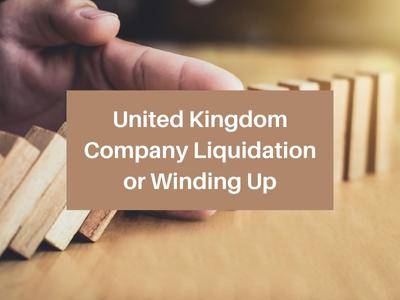United Kingdom Company Liquidation or Winding Up Guide

The unthinkable has happened, and it is now time to close shop. Understandably, this is the biggest fear for any entrepreneur and is a sad reality that some may find themselves facing. Statistics indicate that approximately 60% of all start-ups fail within the first three years. Hence, it is always prudent to plan for the best but prepare for the worst. Reading a guide to United Kingdom company liquidation or winding up should thus be an essential part of your preparations.
Making the Best of a Bad Situation
Dissolving your company requires looking at liquidation and winding up. They are generally used collectively and interchangeably in the United Kingdom. They are part of the process involved when deciding to stop doing business entirely and dissolve your company. Liquidation of a company involves selling off assets to pay creditors. Conversely, winding up includes the liquidation process but is focused on closing the business and ending all business activities.
Closing your business by winding up or liquidation necessitates settling all legal affairs. It also includes removing it from the companies register at Companies House. According to the United Kingdom Government website, your company will cease to exist as soon as it is struck off the register. The criteria for striking off is listed on the website and must be met on all counts. It includes not having traded or sold off stocks in the last three months of operation.
When closing your company, factors to consider include the company’s solvency and whether liquidation is voluntary or compulsory. A company is considered solvent if it has sufficient assets to settle all its debts. If your company is solvent, but you wish to cease operations, then a Members Voluntary Liquidation process can be initiated.
Insolvency usually occurs when business experiences:
- Cash flow insolvency where due liabilities can no longer be met.
- Balance sheet insolvency where liabilities outweigh all company assets.
Where a company is insolvent, then either a creditors’ voluntary liquidation or a compulsory liquidation can occur. The creditors initiate a creditors’ voluntary liquidation upon request from the directors of the company. It requires shareholders’ agreement and affords the directors some control over the entire process.
A compulsory liquidation procedure is actually legally mandated. The directors, with sufficient shareholders’ agreement, can apply to the courts for this winding-up order. Conversely, compulsory liquidation can also be forced upon a company by its creditors.
Once a liquidator has been appointed, control of the company ceases to be vested in the directors and shareholders. The liquidator will settle legal disputes, sell all assets, pay creditors, and dissolve the company, amongst other duties. Where liquidation arises due to insolvency, there is a five-year ban on forming or managing a business with the same name. However, there are exceptions to this general rule, including applying to the courts for permission to use a name.
A guide to United Kingdom company liquidation or winding up can only provide a framework upon which to base your understanding. To ensure that all the compliance boxes are ticked, it’s best to get professional help. 3E Accounting offers customisable solutions that will take care of all your business needs. Contact 3E Accounting today and let the experts take over for the best viable outcomes.

